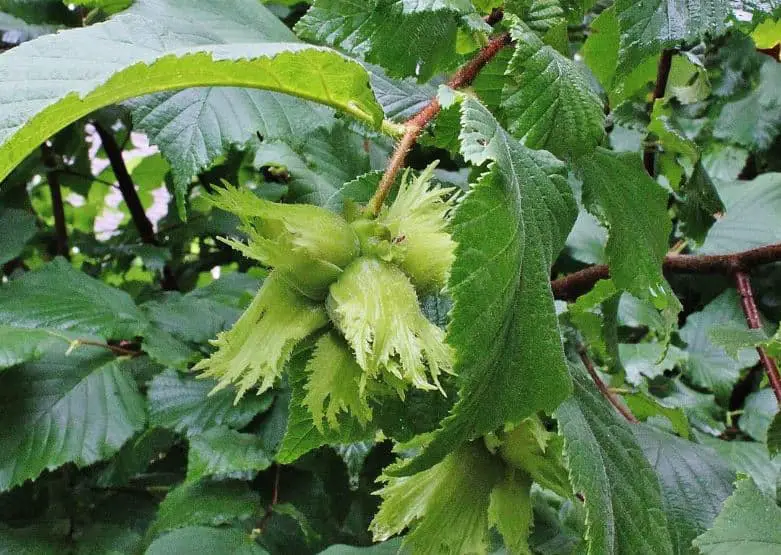An edible nut is produced by the native North American shrub known as the beaked hazelnut or filbert. It is a good option for hedges, forest gardens, and native plants. It is simple to cultivate since it is a natural plant, but it needs some upkeep to keep it neat.

About Beaked Hazelnut
Most of Canada and the United States is the natural habitat of this hazelnut species, Corylus cornuta. A deciduous shrub ranges in size from small to huge. Depending on the environment, it may reach heights of four to 25 feet (1.2 to 7.6 meters).
A deciduous tree, beaked hazelnut, has ovate, toothed, brilliant green leaves that change to yellow in the autumn. Long male catkins and tiny female flowers with brilliant crimson stigmas are among the blooms that bloom in the spring. This hazelnut gets its name from the nut. A projection that resembles a beak protrudes from the husk around the spherical nut.
Can You Eat Beaked Hazelnuts?
Certainly, these hazelnuts are edible, but many people leave them for the animals to eat. Commercial hazelnuts have a comparable taste and are bigger since they are hybrids. Fall is the time to gather beaked hazelnuts for roasting and eating.
A Beaked Hazelnut Tree Exists?
There is just one plant species with this name, often categorized as a shrub. It can grow large but may also be cultivated as a little tree. It may be taught to have a single main branch and frequently pruned to keep it more like a tree.
American Hazelnut vs. Beaked Hazelnut
The American hazelnut, Corylus americana, is a tree-like shrub endemic to eastern North America. The nut casing, which lacks protrusion, is the best method to tell it apart from the beaked type.
Beaked Hazelnut Growth and Care
If you are searching for a native shrub or small tree, this is a fantastic option. It works well for woods or natural plants. It may be grown as a hedge as well. Use beaked hazelnut to support and attract local wildlife, such as birds, pollinators, and small animals.
Everywhere it is native, including USDA zones 4 through 8, beaked hazelnut thrives well. Southwest and southern plains states do not have native populations of it. It naturally grows beside streams, in thickets, clearings, and on the borders of woods.
It will thrive in the majority of locations in a home garden. While the beaked hazelnut is not very picky about the kind of soil, it cannot stand dense clay. Rich soils with adequate drainage, a little acidity, and moderate wetness are optimal for growing it. It is like direct sunlight to light shade.
Getting it Planted
Beaked hazelnut may be grown from seed, but developing into a substantial shrub will take some time. To acquire a bigger transplant, look for nurseries that sell native plants. After planting it, give it water for the first season so the roots may grow deeper. Following that, it will not need as much attention.
Trimming or pruning is one aspect of care that beaked hazelnut trees need. You may let it grow organically, but it quickly forms impenetrable thickets and spreads through suckers. Regularly clip back the suckers to encourage a more orderly growth habit.
If you plant nuts specifically for harvesting, expect them to be available in the autumn. They can be cut off, or you may wait for the nuts to fall. The squirrels could take them if you wait, however. Let the nuts finish drying in their shells after harvesting before storing them. This might need a week or more. Hazelnuts may be dried and kept for many months to enjoy.


